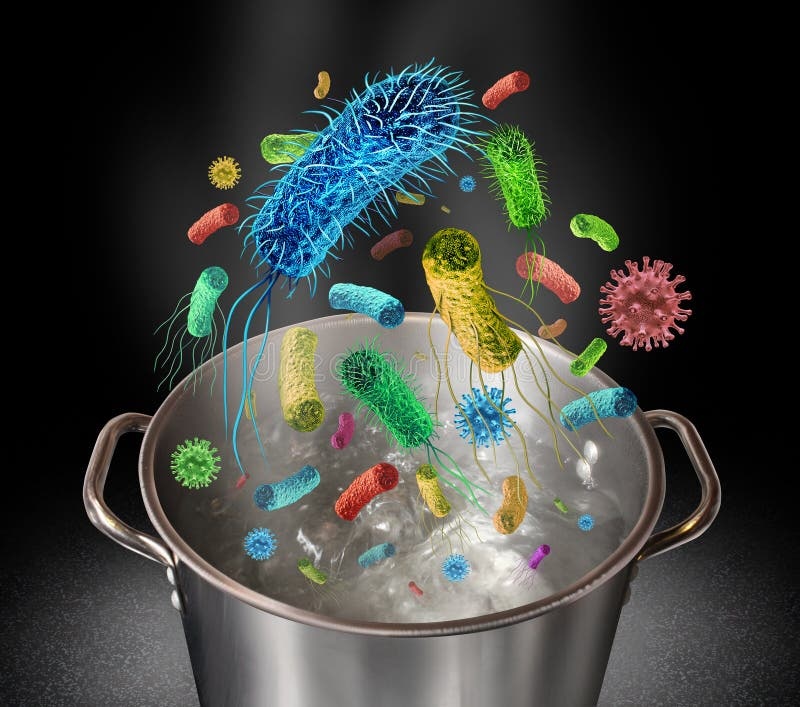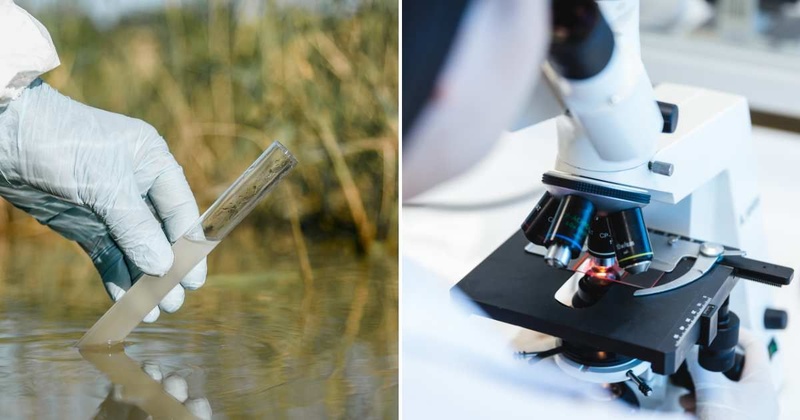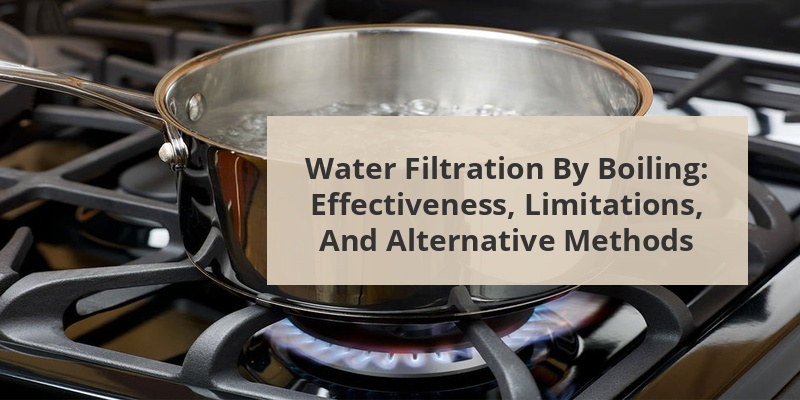When faced with questionable water quality, boiling is often suggested as a purification method. But can you actually filter water by boiling it? While boiling effectively kills harmful microorganisms like bacteria, viruses, and parasites, it doesn’t technically filter water. Boiling is a purification method that makes water biologically safe to drink but doesn’t remove physical contaminants such as chemicals, heavy metals, or sediment. Understanding this distinction is crucial for ensuring water safety, especially in emergency situations or when traveling to areas with compromised water supplies.
Before addressing whether boiling filters water, it’s important to understand the difference between filtration and purification. These terms are often used interchangeably but represent distinct processes.
Filtration refers to the physical removal of particles and contaminants from water. This process typically involves passing water through a medium (like cloth, paper, sand, or carbon) that traps unwanted substances while allowing the cleaner water to pass through.
In contrast, purification makes water safe to drink by eliminating or neutralizing harmful components. This can include killing microorganisms, removing chemicals, or separating other dangerous substances from the water.
Boiling primarily acts as a purification method rather than a filtration technique. It effectively eliminates biological contaminants through heat but doesn’t physically separate other impurities from the water.
Content Navigation
What Boiling Water Actually Does

Boiling water is highly effective at killing pathogenic organisms. When water reaches its boiling point (212°F or 100°C at sea level), the high temperature destroys the cellular structures of microorganisms, rendering them harmless.
Specifically, boiling water can eliminate:
- Bacteria (including E. coli, Salmonella, and cholera)
- Viruses (including hepatitis A, norovirus, and rotavirus)
- Parasites and their eggs (including Giardia and Cryptosporidium)
- Most other biological pathogens
The Centers for Disease Control and Prevention (CDC) recommends bringing water to a rolling boil for at least one minute to ensure pathogen destruction. At higher altitudes (above 6,500 feet), water should be boiled for three minutes due to the lower boiling temperature at elevation.
Contaminants That Remain After Boiling
While boiling effectively eliminates biological threats, many other contaminants remain unaffected by this process. Boiling water doesn’t remove:
- Heavy metals such as lead, mercury, and arsenic
- Chemical pollutants including pesticides, industrial chemicals, and pharmaceutical residues
- Minerals and salts that cause water hardness
- Sediment and particulate matter such as soil, rust, or other physical debris
- Some toxins produced by certain algae
In fact, boiling can sometimes concentrate certain contaminants as water evaporates during the boiling process, potentially making chemical contamination worse if the water contains these substances.
When Is Boiling Water Sufficient?
Despite its limitations, boiling remains an excellent water treatment method in many situations:
- Emergency situations like natural disasters when municipal water systems may be compromised
- Backpacking and camping near natural water sources that mainly contain biological contaminants
- Travel to regions with inadequate water treatment facilities
- Temporary boil-water advisories issued by local health departments
Boiling works best when the water is already relatively clear and free from chemical contamination. If the water source is known to contain only biological contaminants, boiling is often the simplest and most reliable method of making it safe to drink.
Combining Boiling With Other Filtration Methods
For more comprehensive water treatment, boiling can be combined with simple filtration techniques. This multi-barrier approach addresses a wider range of contaminants:
Pre-Boiling Filtration
Before boiling, consider these steps to remove physical contaminants:
- Sedimentation: Allow water to stand so that heavy particles settle at the bottom
- Cloth filtration: Pour water through a clean cloth, coffee filter, or paper towel to remove sediment
- Improvised filters: Create layered filters using sand, charcoal, and gravel to remove larger particles
Post-Boiling Improvements
- Aeration: Pouring water back and forth between containers can improve taste after boiling
- Cooling: Allow water to cool naturally with the container covered to prevent recontamination
By combining these methods, you can address more contaminants than boiling alone would remove, making your water both biologically safe and more aesthetically pleasing.
Alternative Water Purification Methods
When boiling isn’t practical or doesn’t address all water quality concerns, consider these alternatives:
| Method | Effectiveness Against Pathogens | Removes Physical Contaminants | Removes Chemicals | Convenience |
|---|---|---|---|---|
| Boiling | Excellent | Poor | Poor | Medium (requires heat source) |
| Commercial Filters | Good to Excellent (depends on type) | Good to Excellent | Variable (carbon filters work well) | High |
| Chemical Treatment (chlorine, iodine) | Good | Poor | Poor | High |
| UV Purification | Excellent | Poor | Poor | Medium (requires clear water and power) |
| Distillation | Excellent | Excellent | Good (for most chemicals) | Low (energy intensive) |
For comprehensive water treatment, modern filtration systems often combine multiple technologies. For instance, a reverse osmosis system with activated carbon can remove most biological, physical, and chemical contaminants.
Step-by-Step Guide to Properly Boil Water

When boiling is your chosen method, follow these steps for maximum effectiveness:
- Pre-filter if possible: If water is cloudy, filter it through a clean cloth or let it settle and then decant the clearer water
- Use a clean pot: Choose a pot with no contaminants that might leach into the water
- Bring to a rolling boil: Ensure the water reaches a vigorous, bubbling boil
- Maintain the boil: Keep water at a rolling boil for at least 1 minute (3 minutes at high altitudes)
- Let water cool naturally: Cover the pot and allow the water to cool to a safe temperature
- Store safely: Transfer to clean, sanitized containers with tight lids
For improved taste after boiling, consider adding a pinch of salt per quart or transferring the water between containers several times to re-oxygenate it.
Special Considerations for Different Water Sources

Different water sources present unique challenges when considering boiling as a treatment method:
| Water Source | Boiling Effectiveness | Additional Treatments Recommended |
|---|---|---|
| Municipal Tap Water (under boil advisory) | Usually sufficient | Generally none needed |
| Clear Running Stream | Good for biological contaminants | Pre-filtering recommended |
| Stagnant Pond | Kills pathogens but doesn’t improve appearance | Pre-filtering essential; chemical treatment may be needed |
| Flood Water | Insufficient alone due to likely chemical contamination | Avoid if possible; advanced filtration required |
| Rainwater | Generally effective | Pre-filtering recommended, especially for first rainfall |
Always assess your water source before deciding if boiling alone is sufficient. Water from industrial areas or after flooding may contain contaminants that boiling cannot remove, making additional filtration necessary.
Tips for Getting the Best HVAC Prices
- Prioritize Quality Over Cost
The most critical factor in any HVAC project is the quality of the installation. Don’t compromise on contractor expertise just to save money. - Check for Rebates
Always research current rebates and incentives — they can significantly reduce your overall cost. - Compare Multiple Quotes
Request at least three estimates before making your choice. You can click here to get three free quotes from local professionals. These quotes include available rebates and tax credits and automatically exclude unqualified contractors. - Negotiate Smartly
Once you've chosen a contractor, use the proven strategies from our guide — How Homeowners Can Negotiate with HVAC Dealers — to get the best possible final price.

